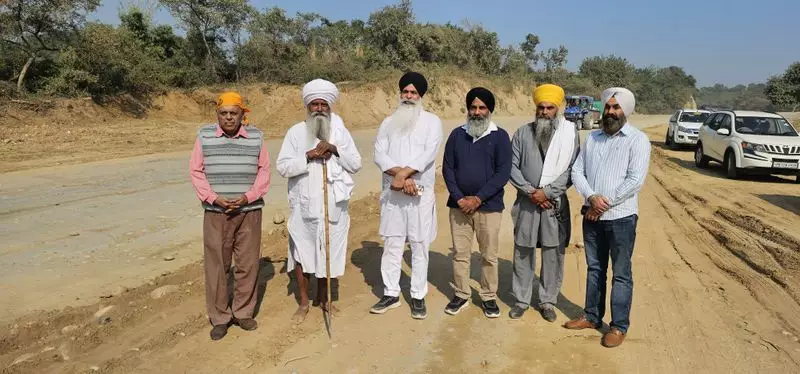
In an extraordinary display of community spirit and self-reliance, volunteers in Punjab have successfully constructed an eight-kilometer road without any government funding. This remarkable initiative was completed ahead of the 400th birth anniversary celebrations of Guru Tegh Bahadur, demonstrating what determined communities can achieve through collective effort.
Grassroots Initiative Transforms Rural Connectivity
The newly built road stretches from Kalanaur to Dholowal in Punjab's Gurdaspur district, addressing long-standing connectivity issues that had plagued local residents. For years, villagers faced tremendous difficulties traveling between these areas, particularly during monsoon seasons when existing pathways became virtually impassable.
Local residents and volunteers from surrounding villages joined forces to make this project a reality. The collective effort saw people from diverse backgrounds working shoulder-to-shoulder, contributing their time, resources, and labor to create infrastructure that would benefit the entire community.
Timing Coincides with Historic Anniversary
The road construction holds special significance as it was completed just before the 400th birth anniversary of Guru Tegh Bahadur, the ninth Sikh guru. Community leaders emphasized that the project embodies the Sikh principles of selfless service and community welfare that Guru Tegh Bahadur championed throughout his life.
The timing was deliberately chosen to honor the Guru's legacy through practical action rather than mere ceremony. Organizers stated that completing this public utility project represents the truest form of paying homage to the Sikh guru's teachings about serving humanity.
Community Mobilization and Resource Management
What makes this achievement particularly noteworthy is the complete absence of government funding. The entire project was financed and executed through community contributions and volunteer labor. Local businesses donated construction materials while residents provided equipment and machinery.
Volunteers worked in shifts throughout the day, ensuring continuous progress on the roadway. The coordination involved meticulous planning, with community leaders organizing work schedules and resource allocation to maximize efficiency.
The successful completion of this eight-kilometer road serves as a powerful example of what communities can accomplish when they unite for common goals. It demonstrates that grassroots initiatives can effectively address infrastructure gaps without waiting for government intervention.
Local authorities have acknowledged the achievement, with several officials praising the community's initiative and dedication. The project has not only improved transportation but has also strengthened community bonds and set a precedent for future collaborative efforts in the region.





